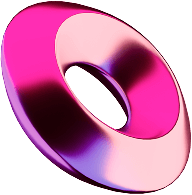What s included in the development of a brand book'
Mission, values, and positioning are the foundation of the brand: why it exists, what it believes in, and how it differs from others. These elements shape the brand's character and set the direction for all communication, helping build trust and recognition with the audience.
Shows primary and alternative logo versions (color, monochrome, vertical, horizontal). Specifies placement rules: acceptable backgrounds, minimum size, clear space, and examples of incorrect usage (distortion, wrong colors, etc.).
Describes primary and secondary brand colors with codes for print and screen (RGB, CMYK, HEX, Pantone). Also selects brand fonts: headline, body text, and auxiliary, with examples of their combination and hierarchy.
Visual accents that complement the logo and colors: patterns, icons, frames; brand textures; image style, photo editing, or illustrations. These elements create a recognizable brand image in visual communication.
Examples of using the brand style in real formats: business card, letterhead, envelope; presentation template, social media design; packaging, merchandise, signage. The number of collateral items is chosen individually—based on the company's choice and needs. Source files for all collateral are provided in print-ready format.
Instructions for applying the brand style across different channels: digital, offline, advertising, print. This section helps avoid mistakes and maintain brand consistency when different specialists—designers, copywriters, contractors—are involved.
Cost and Timeline for Brand Book Development
A brand book is a tool that helps everyone working with the brand—designers, copywriters, marketers, contractors—to act in unison and speak to the audience with a single voice. A brand book maintains style, saves time on explanations and revisions, reduces the risk of errors, and enhances brand trust through professional and consistent presentation. Essentially, it's the foundation for stable growth and strengthening the company's image.
The time required to create a brand book depends on the scope of tasks and the level of detail. The timeline is influenced by how many sections need to be developed—just the visual part or also the strategy, tone of voice, and collateral. If you already have a logo and basic identity, the process is faster. The complexity of graphics, the number of revisions, and the speed of approval at each stage also matter.
Frequently Asked Questions
A brand book is a document that combines the strategy and visual style of a brand. It helps everyone working with the brand maintain a consistent style and speak to the audience with one voice.
A style guide mainly covers visual rules (logo, colors, fonts). A brand book is deeper: it includes mission, values, positioning, tone of voice, and examples of collateral.
Mission, positioning, tone of voice, logo with rules, colors, fonts, graphics, collateral, and usage recommendations. We also include the development of collateral tailored to the company's specific request.
The price depends on the scope and complexity. We offer several packages—from basic to extended, adaptable to the company's needs.
A basic version takes 2 to 4 weeks, while an extended brand book takes 1 to 3 months. It all depends on the scope and the speed of approvals.
Yes, we can adapt the visual part of the brand book to your existing logo and develop the rest of the structure.
We select collateral individually based on your brand's needs and industry, ensuring all materials are relevant and useful specifically for you. Additional collateral can be added upon request.
Yes, you will receive the finished brand book in PDF format, with clear recommendations for designers, copywriters, and contractors.





